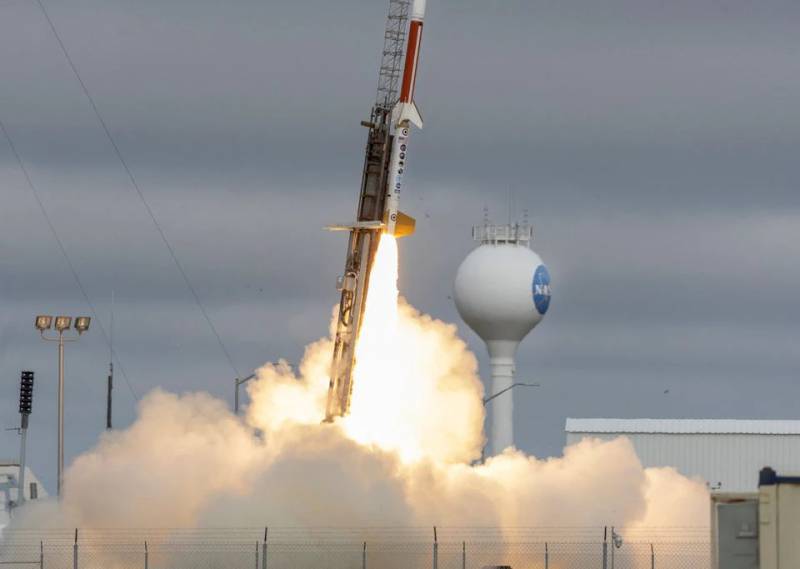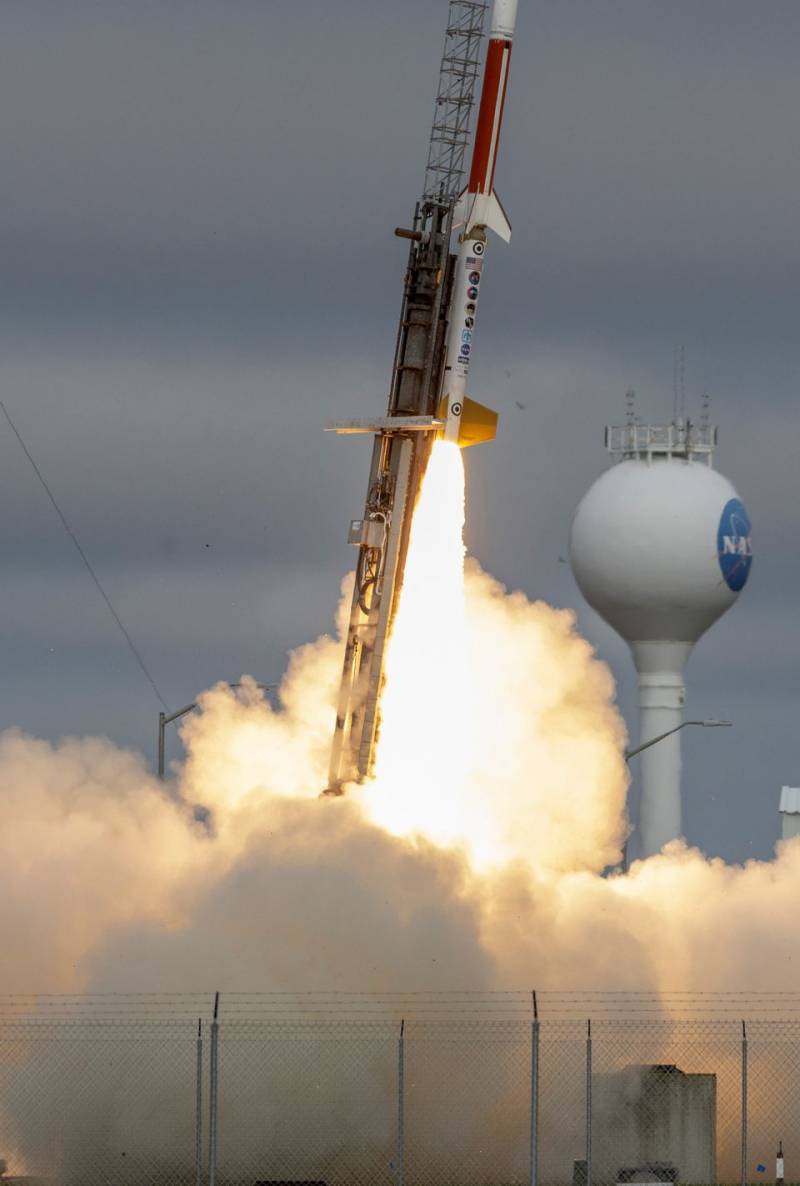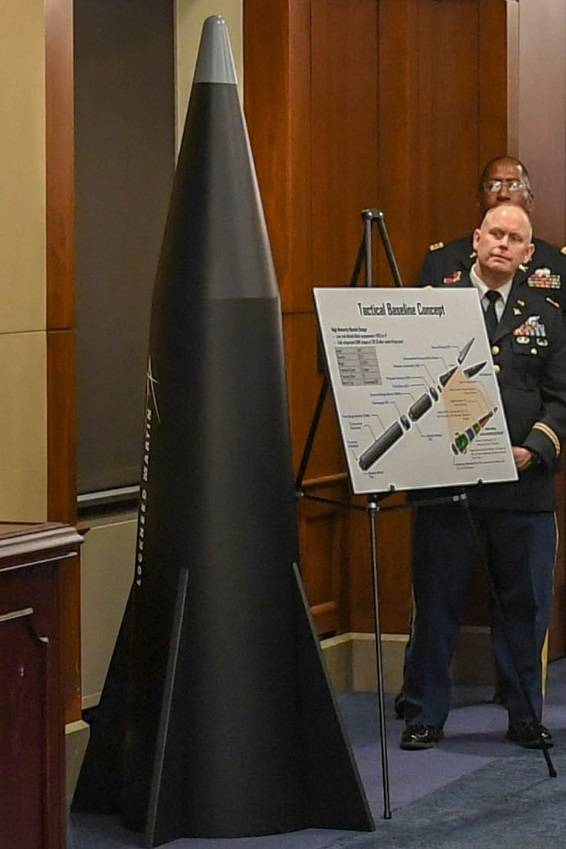The United States launched a mock-up demonstrator of a hypersonic warhead

Rocket launch October 26
At present, several projects of promising missile systems with hypersonic warheads are being developed in parallel in the United States. In order to test and refine the key solutions of these projects, a simplified experimental technology demonstrator complex was developed. The other day, it was tested, during which it was possible to collect the necessary data.
New challenge
The experimental hypersonic complex, whose name has not yet been announced, is intended to develop technologies used to create combat systems for the ground forces and the Navy. The customers of its development were project management fleet Strategic Systems Programs (SSP) and Conventional Prompt Strike (CPS) of the fleet, as well as the Army's Army Hypersonic Project Office (AHPO).
The direct creation of the project was carried out by the scientific and design organizations of the Pentagon and NASA, as well as various universities and commercial contractors. The same "team" of developers is also busy in the process of creating full-fledged combat systems.
To date, the subsidiary project has reached the stage of flight tests. These activities were carried out by the Sandia National Laboratories with the participation of other developers and the customer. The launch and flight were observed by representatives of the Missile Defense Agency, which has recently dealt with issues of protection against hypersonic weapons. The launch took place at the Wallops test site (Virginia). The tests were designated as High Operational Tempo for Hypersonics flight.
According to the press service of the US Navy, the first test flight of the prototype took place on October 26 at 14:30 local time. The results of this test remain unknown. At the same time, they announced the second launch of a rocket with an experimental warhead. It was scheduled to be completed by the end of this week.

Launcher and rocket larger
К news about the first launch, they attached a photo from the test site. It shows a launcher with an inclined rail, on which a hypersonic launch vehicle is mounted. The photo was taken immediately after starting the engine and before the rocket left the rail. It is curious that the head part of the rocket, probably containing the experimental warhead, was prudently left behind the scenes.
intermediate stage
However, the Pentagon cites some interesting data. So, the pilot project was created as an addition to the program for the development of a unified warhead Common Hypersonic Glide Body (C-HGB) for the Navy and the Army. Such a product has already been developed and tested twice in flight. Plans were made for further tests, but they have not yet taken place.
Due to the complexity of the project and known risks, instead of testing a full-fledged C-HGB, it has now been decided to conduct "intermediate" tests using a technology demonstrator. One of the serial meteorological rockets of the Black Brant series was chosen as the carrier of such a product.
An experimental complex of this composition will ensure the testing of new technologies and the collection of the necessary data. At the same time, its relative simplicity and low cost will allow more frequent test launches and provide significant savings in the finishing process. Having completed the development of technologies and solutions on a reduced demonstrator, developers will be able to improve the main C-HGB project and begin new tests of such a warhead.
Warhead and its analogue
The main C-HGB project provides for the creation of a guided planning hypersonic warhead of the Boost-glide type. It will be used with a solid-propellant rocket, which will accelerate the block to the required speed and bring it to the calculated trajectory.

C-HGB product testing in March 2020
The C-HGB missile system will be interspecific. The unified weapon will be used by submarines, land systems and long-range aviation. Due to the unification of weapons of several branches of the armed forces, they plan to receive economic and operational benefits.
The exact appearance of the C-HGB block has not yet been disclosed. Previously, a layout of a characteristic appearance appeared in open materials, but it is not known whether it is related to a real project. The layout is made in a conical body and has triangular stabilizers located in the tail in an X-shaped pattern. It is known that the C-HGB unit will reach speeds of more than 5 M. The range is unknown. Presumably, it will be part of medium-range missile systems.
The experimental technology demonstrator aircraft should look like a full-fledged warhead. It too can be tapered and carry stabilizers/rudders. At the same time, it is smaller and lighter - in accordance with the requirements of Black Brant missiles.
To be installed on such a carrier, the experimental unit must have a diameter of no more than 450-500 mm and a mass of up to 100 kg. Permissible weight and overall parameters depend on the specific type of meteorological rocket used. The selected carrier is able to bring the block to a great height and accelerate to hypersonic speed.
Apparently, in terms of range, the experimental complex is inferior to the full-fledged C-HGB. However, to collect data on the launch, acceleration and behavior on the main part of the trajectory, a long range is not required. The same applies to working out the final part of the flight, incl. defeating learning targets.

Presumably the layout of the C-HGB block
On time
The Pentagon expects that tests of simplified missile systems with an experimental hypersonic unit will simplify and speed up the development of major projects. Some of these expectations correspond to the real state of affairs, it is not clear. So far, it cannot be ruled out that the project does not fully cope with the tasks set and can, at least, get out of schedule.
"Intermediate" tests with the technology demonstrator have just begun and could not yet give all the desired results. Additional launches take time. In addition, time will be spent on finalizing the main C-HGB project, as well as missile systems based on it. How soon these works will be completed, and a full-fledged combat unit will be able to reach the test, is not reported.
According to previously announced information, in 2023 the Pentagon plans to conduct the first full-fledged tests of the LRHW hypersonic complex for the ground forces. Infrastructure is also being prepared for the deployment of such weapons in units. In parallel, similar training will go to the Air Force and Navy, which will also receive a unified missile.
However, the observed processes and pace of work raise doubts about the feasibility of the plans drawn up. It cannot be ruled out that next year the Pentagon will be able to complete only part of the planned work, and the remaining activities will have to be postponed to the future. In this case, all current intentions will be fulfilled only by 2024-25.
Difficulties and overcoming them
The US Armed Forces and industry have been dealing with hypersonic issues for a long time and even have some success in this direction. However, so far they all come down to creating a scientific and technological base and conducting individual tests. The process of creating full-fledged combat systems for deployment among the troops is ongoing, but has not yet yielded the desired results.
In order to reduce costs and risks, as well as to speed up the pace of work, simplified tests are now carried out on prototype samples. The first activities of this kind have already been carried out, and the approach chosen is generally in line with expectations. Whether it will be possible with its help to solve all the remaining tasks and create a fundamentally new weapon in the desired time frame - the very near future will show.
Information